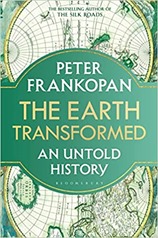 Next up The Mythical Man-Month: Essays on Software Engineering by Frederick Brooks Jr.
Next up The Mythical Man-Month: Essays on Software Engineering by Frederick Brooks Jr.
This is a classic in software engineering which I’ve not previously read, I guess because it is more about software project management rather than programming itself. That said it contains the best description I have seen as to why we love to program, it is a page long so I won’t quote it in full but essentially it divides into 5 parts.
- the joy of making things;
- the joy of making things which other people find useful;
- the joy of solving puzzles;
- the joy of learning;
- the joy of working in such a malleable medium;
The majority of the book was written in the mid-seventies, following the author’s experiences in the previous decade, delivering the IBM OS/360 system. This means it reads like Asimov’s Foundation in places, dated technology, dated prose, but at the same time insightful. This is the 20th anniversary edition, published in 1995 which includes 4 new chapters tacked on the end of the original book. Two of these – No Silver Bullet and No silver Bullet – refired are a couple of essays from the eighties around the idea that there are no silver bullets to making software production greatly more efficient – this is in the context of hardware improvements which were progressing at unimaginable speed – Brooks was looking for routes to similar evolution in software development.
The other two new chapters are a bullet point summary of the original book and a retrospective on the first publication. The bullet point summary chapter removes the need for my usual style of review!
The core of the book is the observation that large software projects frequently fail to be delivered as scheduled. There then follow some chapters on addressing this issue. The Mythical Man-Month chapter is the most famous of these, it essentially says the enticing idea of throwing more people at a problem will speed up delivery is wrong. In some cases this is trivially true – you may have seen the example from the book that two women do not produce a baby in 4.5 months rather than 9 months for a single woman. The reason increasing team numbers for software development similarly fails is the cost in time of effective communication between more people, and the cost in time of onboarding new people. Despite our knowledge we still routinely under-estimate programming tasks, largely through mis-placed optimism.
As mentioned above, The Mythical Man-Month is quite dated. The anachronisms come in several forms, there is the excitement over computer text-editing systems – a revelation at the time of OS/360 was being developed. There is a whole chapter devoted to memory/storage usage which I am pretty sure is no longer a concern except in a few niche cases. There is quite a lot of discussion of batch versus time share systems, from a time when there were one or maybe two computers in a building rather than one on every desk, even one in every pocket. There are role anachronisms, where a team has two secretaries and a "Program Clerk" whose role it is to type stuff into the computer!
There are some places where Brooks describes practices which sound quite modern but differ slightly differently to the current sense. So "architecture" in his parlance is more about interface design than "architecture" as we would describe it now. There is some pair-like programming but it has a leader and a follower rather than equals. Agile is mentioned but not in the modern sense.
I was interested to read Brooks disdain of flowcharts. I remember learning about these – including proper stencils from my father – a programmer trained in the early sixties. Brooks argument is that the flowchart is useful for programming in low-level languages like assembler but not useful for high level languages – particularly those using the "structured programming" approach which was new at the time. Structured programming replaces the GOTO statements found in earlier languages with blocks of code executed on if – then – else conditions and similar.
In a chapter entitled Plan to throw one away Brooks talks about the inevitability of the first iteration of a product being thrown away to be replaced by a better thought out version although he caveats this a little by allowing for progressive replacement. He notes that maintenance costs can be 40% of original cost and each new version fixing bugs has a 20% chance of introducing new bugs. This means the progressive replacement approach is a losing game.
In some ways this book is depressing, nearly 50 years after it was written software projects are still being delivered late with great regularity. On a more positive note I believe that the widespread availability of web APIs and online module libraries (such as PyPI for Python) can produce the sort of large uptick in programmer productivity that Brooks’ felt was out of reach. Perhaps this will not be seen as a productivity boost since it simply means the systems we aim to build are more complex and the number of lines of code measure of code does not capture the complexity of external libraries. The consistent user interfaces provided by Mac OS and Windows are also something Brooks was looking for in his original publication.
Is The Mythical-Man Month still worth reading? I’d say a qualified "yes", the issues it describes are still pertinent and it draws on quantitative research about teams of software developers which I believe will still be broadly relevant. It is a relatively short, easy to read, book. It gives a glimpse into the history of computing. On the downside, much of the incidental detail is so far out of date to be distracting.

